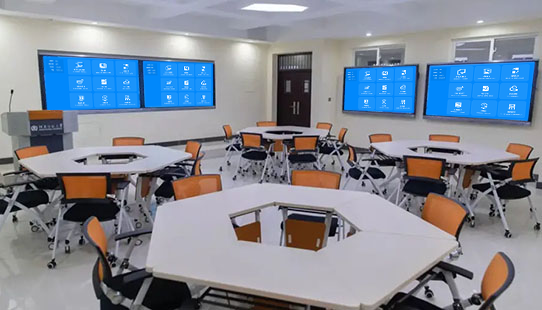Screen-Sharing Devices: An Interactive Accelerator for Group Discussions
Group discussions are a great way to spark critical thinking in the classroom, but traditional methods often suffer from inefficient presentations and a lack of deep interaction. The introduction of screen-sharing devices, with their instant connection and multi-screen collaboration capabilities, is transforming group discussions from mere “small-group exchanges” into “whole-class collaborations.”
Share Results Quickly: Say Goodbye to Slow Presentations
In the past, groups had to take turns going to the front of the class to connect their devices and present their findings. This took up a lot of class time, and students in the back often couldn’t see the details. Screen-sharing devices solve this problem easily.
A group’s discussion report or mind map, created on a tablet or laptop, can be projected onto the main screen with a single click, taking only a few seconds. For example, during a discussion about a classic literary work, one group can instantly project a character relationship map they just finished on a tablet. Another group can then immediately follow with their notes on the main themes. This quick flow of different perspectives makes the sharing process much more efficient.
Multi-Group Collaboration: Deepening the Clash of Ideas
The ability of screen-sharing devices to quickly switch between different devices makes it easier to compare and discuss the results of multiple groups.
In a math class, three groups might have different approaches to a problem. The teacher can project each group’s thought process one by one, pausing at key steps to lead the whole class in analyzing the pros and cons of each method. In a science class, two groups can simultaneously project their experimental data charts using a split-screen display. The differences become obvious, instantly sparking a deeper discussion about controlling experimental variables, making the intellectual exchange more focused.
Precise Intervention: Guiding the Discussion
During a group discussion, a teacher often has difficulty keeping track of every group’s progress, which can lead to delayed guidance. With a screen-sharing device, a teacher can receive projection requests from groups on their mobile device and view their drafts and questions in real time. This allows the teacher to identify a group that’s stuck without having to constantly walk around.
In a discussion about social issues, if a teacher notices a group has a one-sided understanding of “environmental policies,” they can immediately project a policy document onto that group’s device. If two groups are arguing about the source of their data, the teacher can project a reliable database website for them to check. This precise, real-time guidance ensures discussions stay on track.
From the quick presentation of results to a deeper exchange of ideas and precise teacher guidance, screen-sharing devices break down the barriers of space and time in group discussions. They ensure that every group’s ideas are seen and discussed, becoming a key force in energizing classroom discussions.